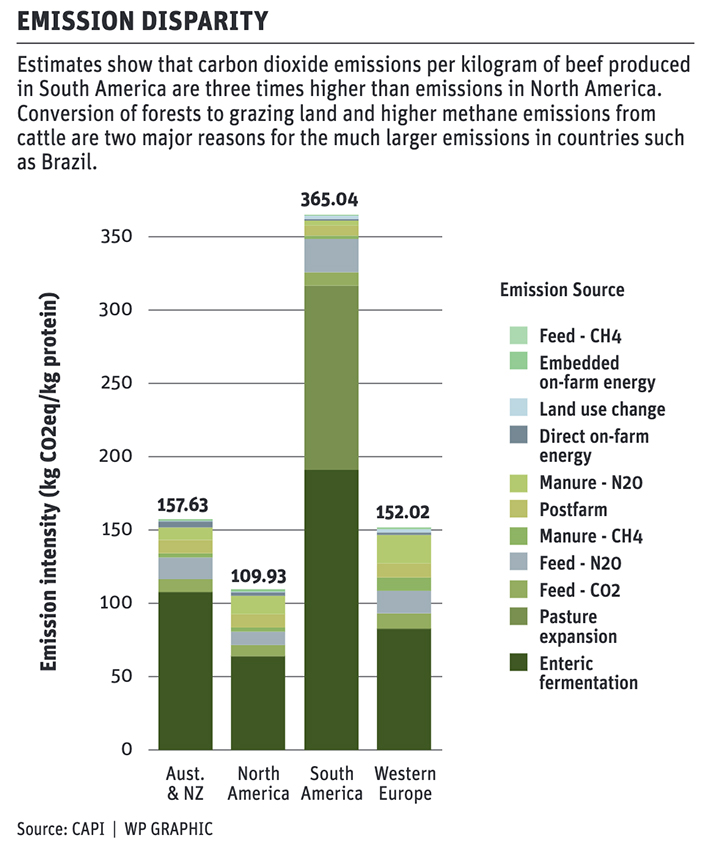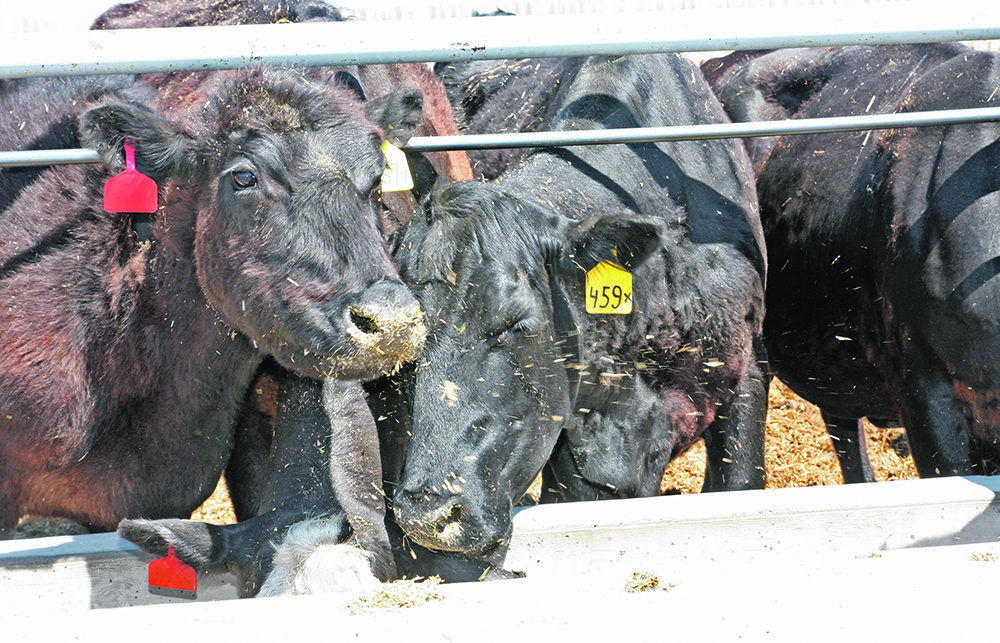WINNIPEG — A chart on page 14 of a recent Canadian Agri-Food Policy Institute (CAPI) report looking at the state of Canada’s livestock industry lists the amount of carbon dioxide emitted per one kilogram of beef production in different parts of the world.
Two numbers in the chart stand out:
- South America emits 365 kg of carbon dioxide per kg of beef produced, largely because of pasture expansion (chopping down rainforests) and higher methane emissions than Canadian cattle.
- In North America, emissions are 110 kg of CO2 per kg of beef.
That’s a massive difference and something that should provide a trade advantage for Canadian beef.
But it doesn’t.
Europe is a good example.

In 2022, the European Union imported $3.5 billion worth of beef, using European Commission trade data.
Of those beef imports:
- $787 million came from Argentina
- $774 million from Brazil
- $458 million from Uruguay
- The European Commission says beef imports from Canada were $31 million in 2022, much higher than figures from Statistics Canada.
CAPI pointed out the contradiction in its report.
“If the objective were to minimize global GHG (greenhouse gas) emissions, Canada would be one of the preferred producers and net exporters,” it said.
“Higher emitting countries would import animal products from Canada to meet their demands and reduce their own production in animal industries. This is not occurring, however.”
















